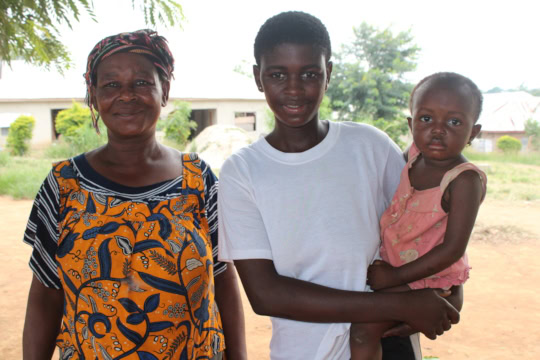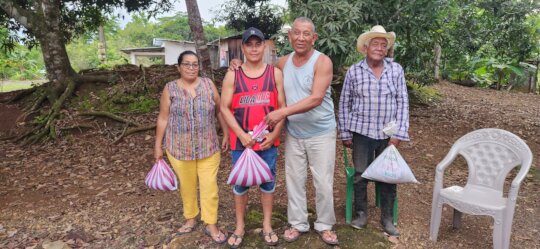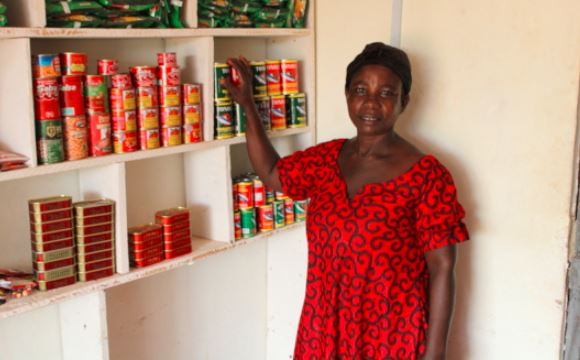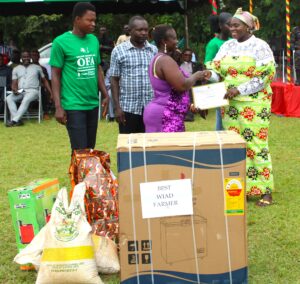So you have clean water. What now?
Give a community a clean water chlorinator, they’ll drink for a month. Teach a community to organize and they’ll drink clean water for a lifetime.

CAPS Leaders show off their completed training worksheets
Self-Help has been partnering with villages in the municipality of Nueva Guinea since January 2015. In the past 30 months, we have installed CTI-8 water chlorination systems in 26 villages in Nueva Guinea, ensuring that 26,888 people in that region have clean drinking water on a daily basis.
Although in our initial training sessions, we help communities understand that there will be ongoing costs to chlorinate the water so it’s safe day in and day out, in our follow up visits with the village Clean Water Committee (CAPS) leaders, it became clear that not all communities have experience managing these ongoing communal costs, such as those necessary to cover expenses associated with water pumps, electricity to power the pumps, and chlorine tablets to keep the drinking water safe each month.
For example, in early June, we tested water in the Santa Fe community of Nueva Guinea. We observed contaminated water because the CAPS leaders did not regularly apply the chlorine tablets. Having a water chlorinator installed is not enough; there must be a sufficient supply of chlorine tablets to keep the water safe.
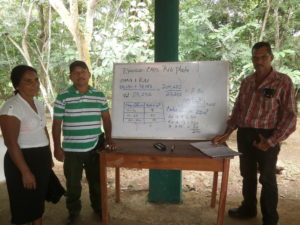
Rio Plata Clean Water Committee shows their calculations
While the average cost is affordable at just $6 per village per month, having clean water is dependent upon the ability of the CAPS to mobilize those funds when needed each month.
Santa Fe is not alone. Many of the communities that are in need of a water purification system have never had any type of water infrastructure nor the social infrastructure (i.e. calculating costs/coordinating communal payment of them) required to maintain such a system. So in mid-June, Orlando Montiel Salas, our Clean Water Program Officer, met with the Nueva Guinea Mayor’s Office to plan workshops to train current and future members of village-level Clean Water Committees to better serve their communities.
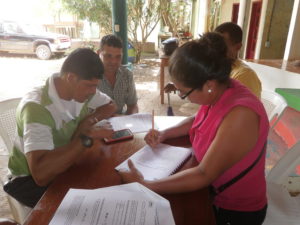
Los Pintos CAPS members calculate how to set sustainable water rates for their community
Orlando created a guide, “How to Calculate the Initial and Ongoing Costs of Installing a Community Water System.” The guide gives step by step instructions on calculating the cost of installation, maintenance, and administration of a new water purification system, including setting an appropriate household maintenance fee.
Now, every community has the same guidelines as well as the financial and infrastructural resources they need to effectively manage their local water system.
We held three separate workshops from June 21 – 23 to ensure that as many CAPS leaders as possible were able to attend. Seventy leaders (20 women and 50 men) representing 23 of the 26 communities participated in the training workshops.
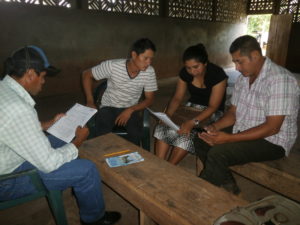
CAPS Training Session, June 23, 2017
In these workshops, we presented the guide and explained how the community leaders could use the system we devised to calculate costs and implement the necessary infrastructure for a water purification system. We also taught the leaders how to provide technical follow-up to their local Clean Water Committees, such as performing residual chlorine and Pathoscreen tests.
Based on the success of these training sessions in Nueva Guinea, we hosted the training session at the Fred Strohbehn Training Center in Rio San Juan on July 27. Six leaders of CAPS from four communities participated in the training session where they, too, learned the methodology for calculating the drinking water tariff rate, adjusted to the real costs and administrative expenses incurred by the maintenance of the CTI-8 Manual Chlorinators and monitoring of the water quality.
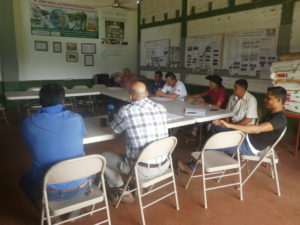
Training session at Fred Strohbehn Training Center in Rio San Juan, July 2017
At the end of that meeting, the six CAPS leaders realized that their collection rates were unsustainable and that they needed to provide their communities with a report and recommendation to set new collection rates differentiated by real consumption of water. Participants of the training said they valued the session and went back to their communities with new tools to better manage their water systems.
Installing chlorinators alone isn’t enough. Communities must be able to maintain the system long term, not just technically, but also financially. Now, CAPS leaders in Nueva Guinea and Rio San Juan are able to provide their communities with clean water in a financially sustainable manner.

